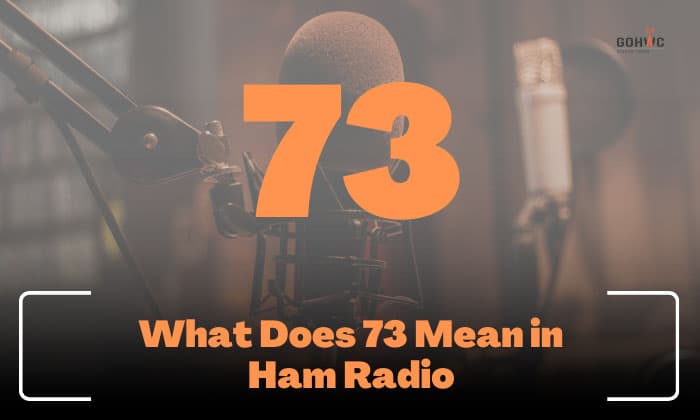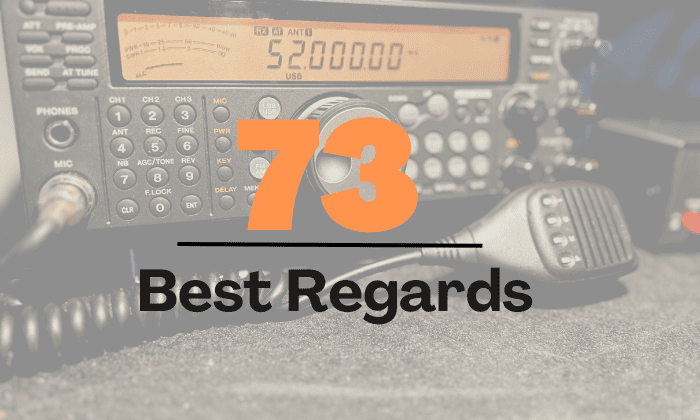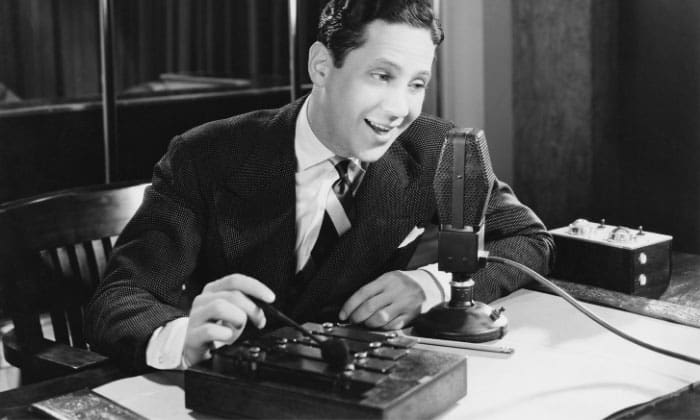Have you heard a successful transmission and asked, “What does 73 mean in ham radio?” It’s one of the ham number codes and means “Best Regards.” Consider it a goodbye by radio enthusiasts, a shortcut instead of saying the phrase at the end of every communication.
Amateur radio users have a set of codes that makes the relay of messages faster. Some numbers have made their way beyond radioing, proof of their effectiveness.
Contents
Meaning and Significance of “73” in Ham Radio
As explained, code 73 in ham radios means “Best regards” and is used to end a message during transmission. Simply put, it’s a way to say goodbye.
Code 73 (and other Western Union 92 codes) is among the many that make radioing easier and quicker. Imagine if you always use a ham, even as an amateur, and constantly say a few phrases and jargon related to radioing.
For example, you’re a truck driver who often asks other truckers, “What is the weather?” at your destination. Instead of voicing out the phrase, you just say “14,” and other radio users should understand you’re asking about the weather.
To save users time and reduce bandwidth, the Western Union put forward a codes list in 1859. This includes a series of numerical codes for frequently spoken phrases during ham radio transmission. Such is the case for 73, which started as a telegraph code.
Origins and History of “73” in Ham Radio
The ham radio’s 73 code is of telegraph origin, proof that it has stood the test of time, benefitting thousands, if not millions, of radio and telegraph users.
The first documented use of the code was in April 1857 in ‘The National Telegraph Review and Operators’ Guide,’ which mentioned it means “My love to you!”
Throughout the years, the code has become a staple of many telegraph guides, with varying definitions but one principle: it signifies the near-conclusion of a transmission.
Later on, during the National Telegraph Convention, peers decided to make the cheesy “My love to you!” have a friendlier tone. After all, the phrase makes others awkward, especially if the relationship between radio operators is platonic or not well acquainted at all.
Two years later, the Western Union Company published the 92 Code, which became a standard not just among telegraph enthusiasts but radio users, too. The guide defines 73 as “Accept my compliments” – more casual and platonic.
Theodore Miller Edison, son of inventor Thomas Edison, also gives a nod to “Accept my compliments” in his book ‘Telegraphy: Self-Taught.’
The book ‘The Telegraph Instructor’ has a shorter meaning for 73: “Compliments”. On the other hand, ‘The Twentieth Century Manual of Railway and Commercial Telegraphy’ has a longer definition: “My compliments to you.”
By the turn of the century, the meaning of 73 became what we use today (“Best Regards”), a more casual reiteration, thanks to the later edition of ‘The Telegraph Instructor’.
Proper Usage of “73” Evolved Over Time
The evolution of 73’s meaning is a testament to its usefulness ever since it was introduced by Morse telegraph operators. It’s not surprising that code 73 is used by police forces and other radio users nowadays.
Code usage in any setup, be it law enforcement or workplaces, makes communication efficient. Imagine an emergency where law enforcers say phrases in every radio transmission – it’s a waste of words and time when they can just blurt out universal codes.
Beyond convenience, the use of ham radio codes promotes comprehension and efficiency.
The 92 Code
| WESTERN UNION “92 CODE” | |||
| 1 | Wait a minute. | 25 | Busy on another wire. |
| 2 | Very Important. | 26 | Put on ground wire. |
| 3 | What time is it? | 27 | Priority, very important. |
| 4 | Where shall I go ahead? | 28 | Do you get my writing? |
| 5 | Have you business for me? | 29 | Private, deliver in sealed envelope. |
| 6 | I am ready. | 30 | No more—the end. |
| 7 | Are you ready? | 31 | Form 31 train order. |
| 8 | Close your key, stop breaking. | 32 | I understand that I am to… |
| 9 | Priority business. Wire Chief’s call. | 33 | Answer is paid. |
| 10 | Keep this circuit closed. | 34 | Message for all officers. |
| 12 | Do you understand? | 35 | You may use my signal to answer this. |
| 13 | I understand. | 37 | Inform all interested. |
| 14 | What is the weather? | 39 | Important, with priority on thru wire. |
| 15 | For you and others to copy. | 44 | Answer promptly by wire. |
| 17 | Lightning here. | 55 | Important. |
| 18 | What’s the trouble? | 73 | Best regards. |
| 19 | Form 19 train order. | 77 | I have a message for you. |
| 21 | Stop for a meal. | 88 | Love and kisses. |
| 22 | Wire test. | 91 | Superintendent’s signal. |
| 23 | All stations copy. | 92 | Deliver Promptly. |
| 24 | Repeat this back. | 134 | Who is at the key? |
Frequently Asked Questions
What are some alternative ways to say goodbye in ham radio?
There are many ham radio slang options when 73 is too casual for you. 30, which means “No more—the end,” is the formal choice. This code is popular among writers and journalists who write it at the end of their pieces.
If you want a cheesy ending, especially when talking to loved ones, you can use 88, which means “Love and kisses.”
Do different countries or regions have their own interpretations of “73”?
Being a standard list, the 92 Code is universal, so when you communicate with radio users in other countries, they are supposed to understand you when you use 73 or any other digits from the list.
However, expect a misunderstanding if the person on the other line is a novice who is yet to master the codes.
Conclusion
Codes are spoken over the radio or via continuous wave or CW (Morse transmission via radio signal). Whatever the mode of transmission, the use of such digits makes communication easier and faster.
The next time someone asks, “What does 73 mean in ham radio?” Show them the complete list of codes and have a fun discussion about how numbers can be so meaningful. After all, when you keep it short and simple, there’s a better chance of remembering things.
To end: 73 88 30.

Hello! I am Hart, the content writer and editor here at G0HWC. I used to be in the same local radio club with Howe, and he convinced me to join him in spreading my love for the radio with others. With a background in radio studies, I spend every day crafting accurate, easy to read content on various topics related to owning and using radios. I hope that my content can help you confidently venture in your radio journey!





